What we call a Class Tree on campus is a tree commemorating a graduated class, typically christened with a ceremony during reunion, such as on a 10th, 25th, or even greater. Our department was recently asked to pick a potential class tree for the upcoming reunion, and we’re more than happy to help. Traditionally we use a tree we’ve already planted in the recent past, and only ask that the class pay for the stone and plaque. This way we know the tree is already well established, so will live a good long time.
Trees connect us in many ways—through life, shade, a place to lean and sit under. Class trees are connected memories, bundles not of neurons and blood, but marking with rings and twigs the experiences of four years at Middlebury, a snapshot in time. Looking at class tree makes you think of your time in Middlebury, and your life during the time of that class.
Even before the discussion of where the tree would be and what type, I’d already picked one I thought would be perfect, and the request of having a Vermont Maple aligned perfectly. It’s a Sugar maple, grown by my good friend V.J. Comai at the South 40 nursery in Charlotte, and was planted 3 years ago.
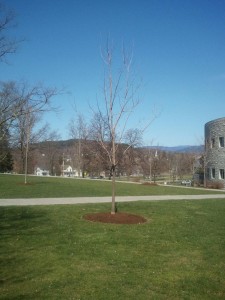
My first summer here I was out in front of the Davis Family Library mapping the trees in the Library Quad. Collectively some of our oldest trees on campus, they are also the most stressed, with years of soil compaction wreaking havoc on fragile root systems. A professor came up to me, to this day I don’t know who, but he undoubtedly taught some of the students in this class. He asked what I was doing.
I explained how I was mapping trees, assessing health and measuring, and he asked if there were plans to plant more trees in this quad. I said most certainly, and showed him some of the weaker old trees nearby, and told him how it was much easier to remove a dying tree if the replacement tree was planted nearby and already well established. He then asked if I was going to keep the original line of trees, and fill some of the holes.
I had no idea what he was talking about. The trees in this quad are scattershot throughout, in random locations in between the uneven lawn shapes formed by the sidewalks. When the new library was constructed, many of the sidewalks were re-done in the library quad. At present, they are graceful swooping curves connecting the various destinations, such as Old Chapel, the library, Emma Willard, and Warner Science and Starr Library.
He points, and I look, and then finally see how many of the trees in the quad aren’t random, but demark a sidewalk long gone, connecting the south (front) door of Warner to the north (again front) door of what we now call Starr/Axinn. The old sugar maples lined the walk, and reading the landscape history, it was clear where some trees were removed, and needed to be replaced. The line is like a hidden Easter egg, a subtle reminder in the landscape of the past that many of us here don’t even know, a past the graduated class looking for a new tree took for granted as they walked on the now removed sidewalk from class to library.
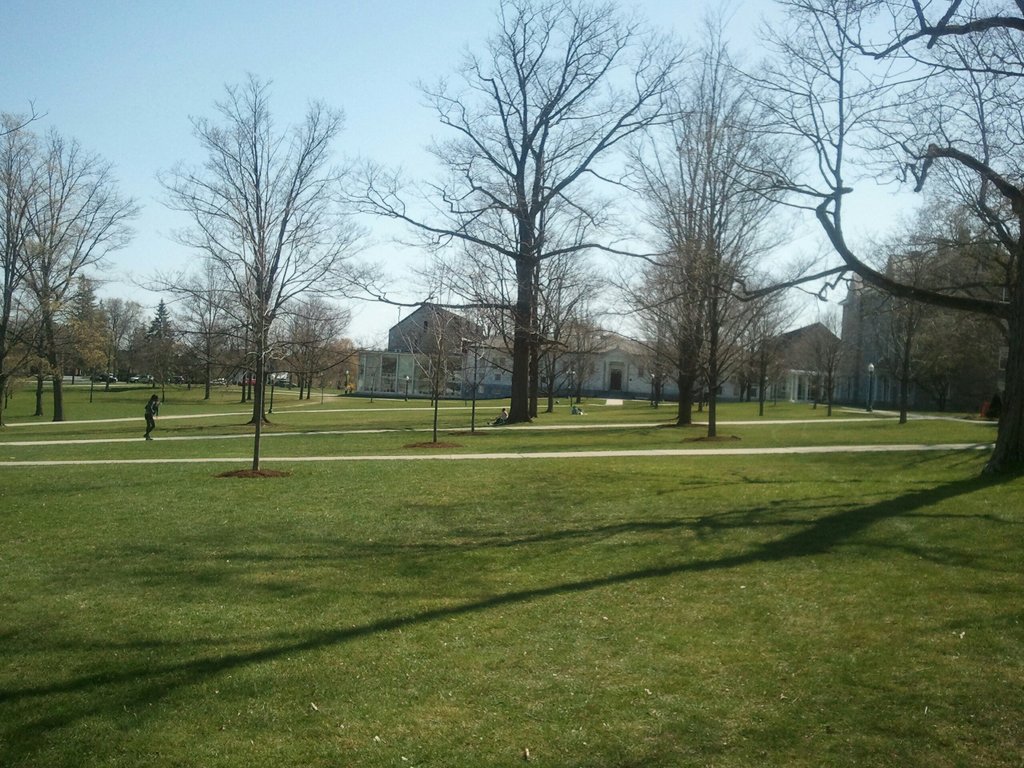
I’ll be placing this plaque in the ground, looking down the row of trees, and thinking about what I was doing while these students were walking the long gone sidewalk. I was failing naptime in preschool.
My preschool was in a church basement, with a painted concrete floor reminiscent of the tile in the church upstairs, but harder, colder. Naptime means we bring out our blankets mom brought the first day of the year, and we place them out in neat rows, lay down for a half hour or so, and probably give the workers there a much needed break. My blanket had developed a hole, and my mom brought it home the previous night, sewn a patch over, and hung it back up on the rack as she dropped me off.
I lay my blanket out on the floor. There’s the patch I’m seeing for the first time, a large, black, hairy spider right where the hole used to be.
Screaming, tears, running, and no nap. For anybody.
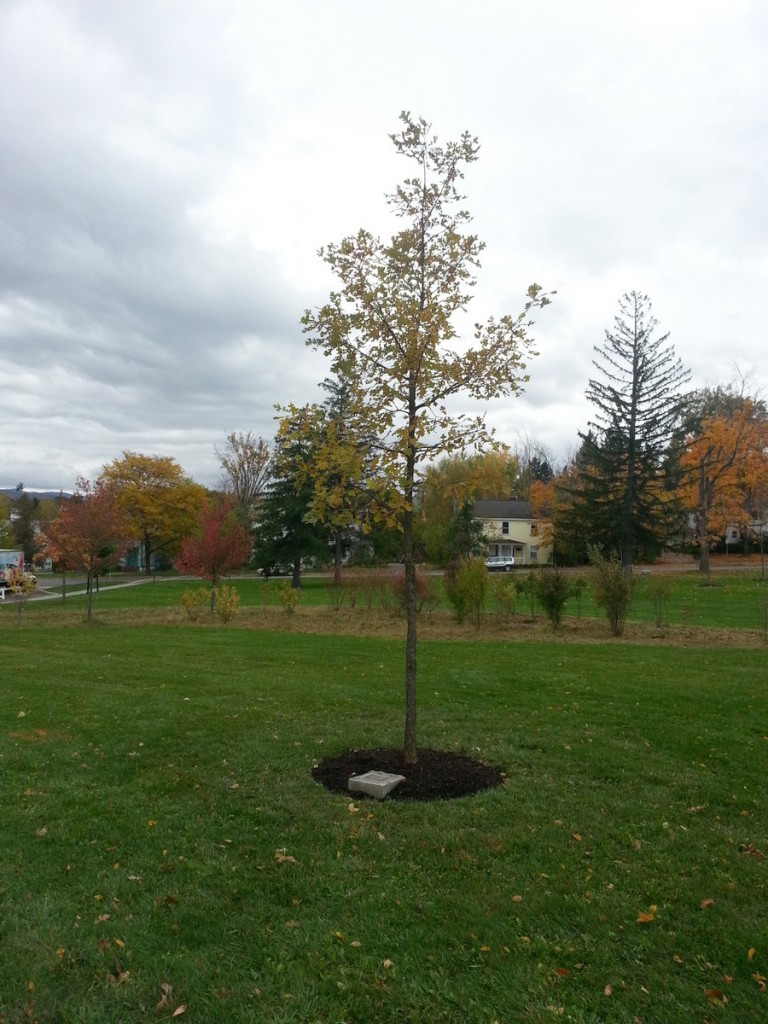

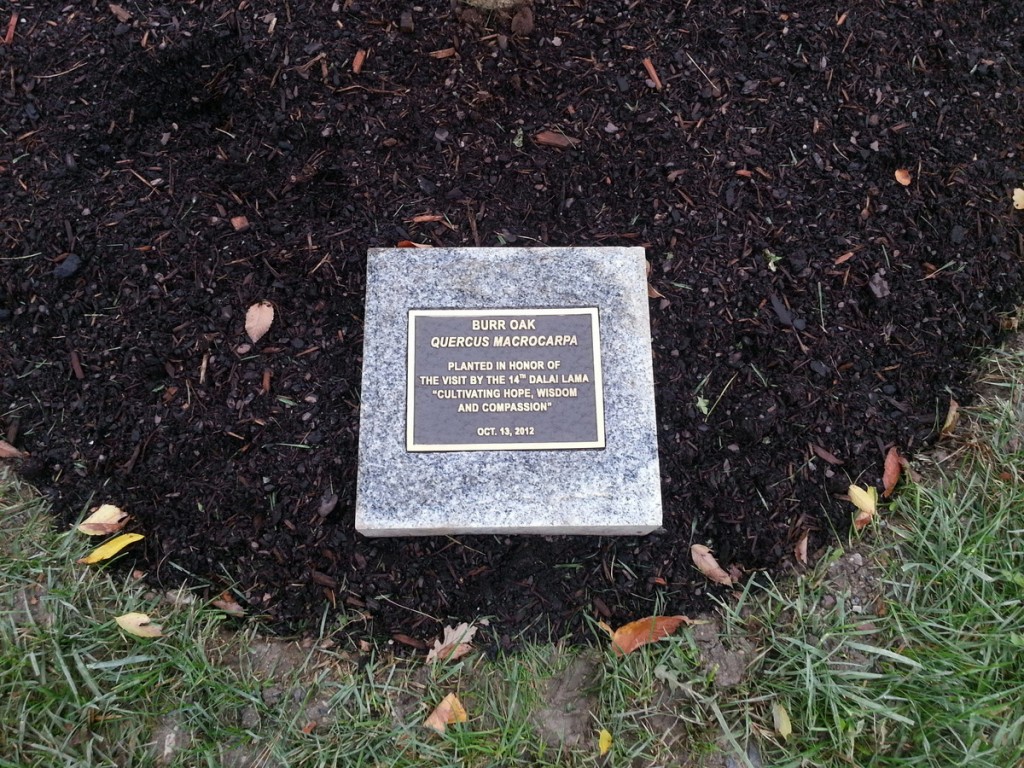
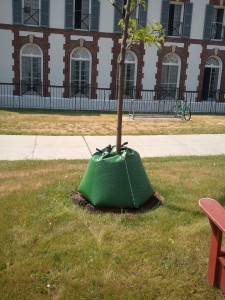
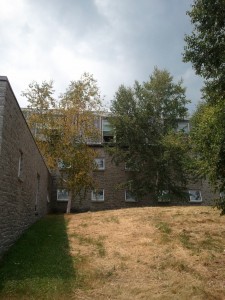
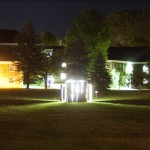
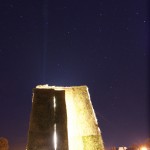
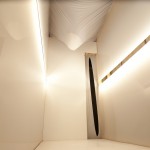
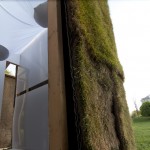
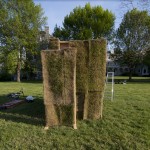
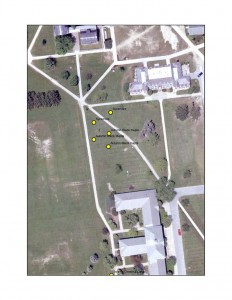


You must be logged in to post a comment.